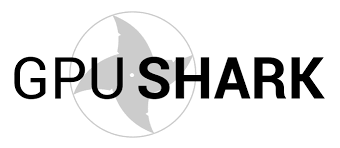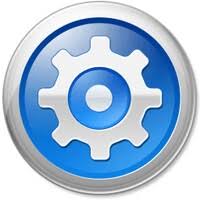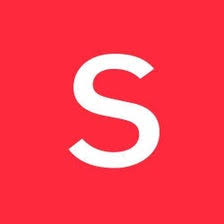GPU Shark II Download (Latest 2025)
GPU Shark II 2.7.0 is the latest version of the powerful graphics processing unit (GPU) monitoring software developed by Geeks3D. It provides users with detailed insights into GPU performance, helping them analyze temperatures, power consumption, fan speed, and other critical parameters. This tool is essential for gamers, overclockers, system builders, and hardware testers who need real-time monitoring and analysis of their graphics cards.
New Features and Improvements in GPU Shark II 2.7.0
With the release of GPU Shark II 2.7.0, the software introduces several new features, bug fixes, and improvements to enhance monitoring and compatibility with modern GPUs.
1. Comprehensive Real-Time GPU Monitoring
GPU Shark II provides live tracking of crucial GPU statistics, including:
- GPU temperature: Prevents overheating by providing real-time temperature readings.
- Clock speeds: Monitors core, memory, and shader clock speeds.
- Fan speed: Ensures the cooling system is functioning correctly.
- Power consumption: Tracks GPU energy usage under different workloads.
- GPU load usage: Displays how much of the GPU’s capacity is being utilized.
- Memory usage: Provides data on VRAM allocation and availability.
This data allows users to identify bottlenecks, optimize GPU performance, and detect potential hardware failures.
2. Enhanced Support for OpenGL and Vulkan APIs
GPU Shark II 2.7.0 now includes improved compatibility with the latest graphics APIs:
- OpenGL 3.2+: Ensures accurate monitoring of GPUs running OpenGL-based applications.
- Vulkan 1.1+: Provides real-time monitoring for Vulkan-based games and software.
This ensures that users can effectively monitor GPU performance across different rendering environments.
3. Improved Multi-GPU Support
Many high-end systems use multiple GPUs for gaming, rendering, and computational tasks. GPU Shark II 2.7.0 enhances support for multi-GPU configurations, allowing users to:
- View detailed performance statistics for each GPU individually.
- Compare usage, temperature, and power consumption across multiple graphics cards.
- Identify performance disparities between different GPUs in a multi-card setup.
4. Lightweight and User-Friendly Interface
GPU Shark II is known for its minimalistic yet powerful user interface. The latest version includes:
- A simplified UI for beginners.
- An advanced mode with more in-depth technical data.
- Compact display options to monitor performance without consuming excessive screen space.
The software is designed to run in the background with minimal impact on system performance, making it ideal for real-time monitoring while gaming or running GPU-intensive tasks.
5. Command-Line Support for Automation
For advanced users and testers, GPU Shark II 2.7.0 includes command-line support, enabling:
- Automated GPU monitoring without opening the graphical interface.
- Logging of temperature, power, and usage statistics for benchmarking.
- Integration into custom scripts for GPU testing.
This feature is especially useful for hardware testers, system administrators, and developers who require automated monitoring solutions.
6. Upcoming Features and Future Compatibility
The developers of GPU Shark II have announced plans for upcoming enhancements, including:
- Support for OpenCL and CUDA APIs to track GPU compute workloads.
- Linux and Raspberry Pi support for expanded compatibility across different platforms.
- Integration with GeeXLab, a tool for advanced graphics testing and benchmarking.
These improvements will further expand the capabilities of GPU Shark II, making it an even more powerful monitoring tool.
How to Use GPU Shark II 2.7.0

Download and Install
GPU Shark II 2.7.0 is available for Windows, with future plans to support Linux. After downloading the installation file, follow the on-screen instructions to install the software.
Launch the Application
Once installed, open GPU Shark II. It will automatically detect and display information about your GPU(s).
Choose Monitoring Mode
- Simple Mode: Displays essential GPU details such as temperature and clock speeds.
- Advanced Mode: Shows additional technical data, including power consumption and memory bandwidth.
Monitor GPU Performance
While running games, benchmarks, or GPU-intensive applications, keep GPU Shark II open to observe real-time performance statistics.
Step 5: Analyze Data and Optimize Performance
Use the monitoring data to:
- Adjust fan speeds and cooling settings if the GPU temperature is too high.
- Modify clock speeds to balance performance and power efficiency.
- Identify any irregularities, such as sudden performance drops or overheating.
Who Should Use GPU Shark II 2.7.0?
1. Gamers and Overclockers
- Helps track GPU temperatures and prevent overheating.
- Provides real-time insights while testing overclocking settings.
- Ensures stable performance during gaming sessions.
2. Hardware Enthusiasts and PC Builders
- Verifies GPU performance and efficiency in custom-built systems.
- Assists in troubleshooting GPU-related issues.
- Allows users to compare multiple GPUs for hardware reviews.
3. Developers and Benchmarkers
- Monitors GPU load and memory usage during software development.
- Helps in optimizing game and application performance.
- Logs GPU performance data for benchmarking and reporting.
4. System Administrators and IT Professionals
- Enables remote monitoring of GPU health and performance.
- Assists in diagnosing potential GPU failures in enterprise systems.
- Supports command-line automation for large-scale deployments.
Why Choose GPU Shark II 2.7.0?
Pros:
Free and lightweight.
Supports a wide range of NVIDIA, AMD, and Intel GPUs.
Real-time monitoring with minimal system impact.
User-friendly interface with advanced options.
Future updates will include support for more APIs and platforms.
Cons:
Currently only available for Windows (Linux support coming soon).
No built-in overclocking tools (monitoring only).
Conclusion
GPU Shark II 2.7.0 is an essential GPU monitoring tool for anyone looking to optimize, troubleshoot, or analyze their graphics card’s performance. With real-time monitoring, OpenGL and Vulkan support, multi-GPU compatibility, and command-line functionality, it offers a comprehensive solution for both casual users and professionals.


